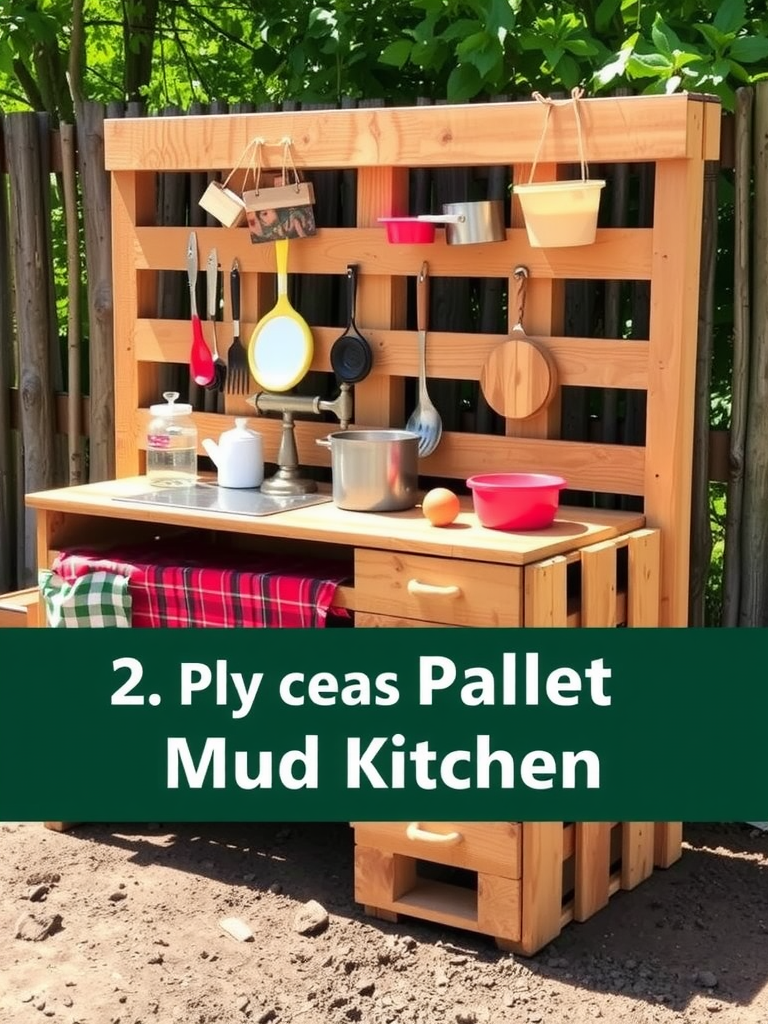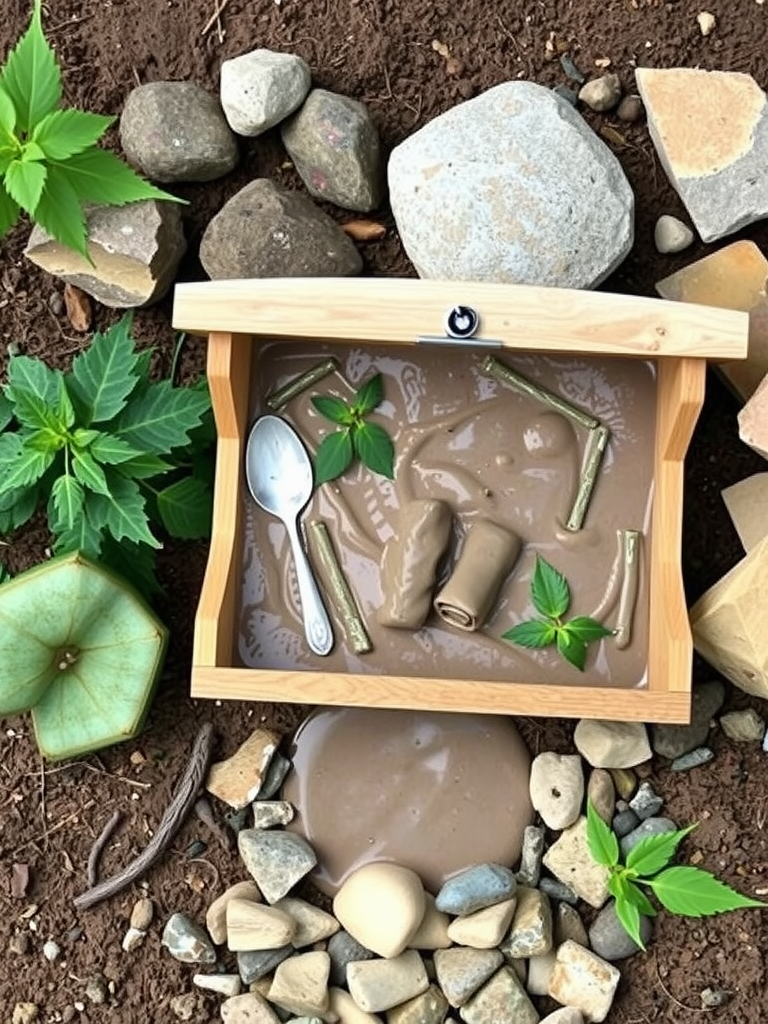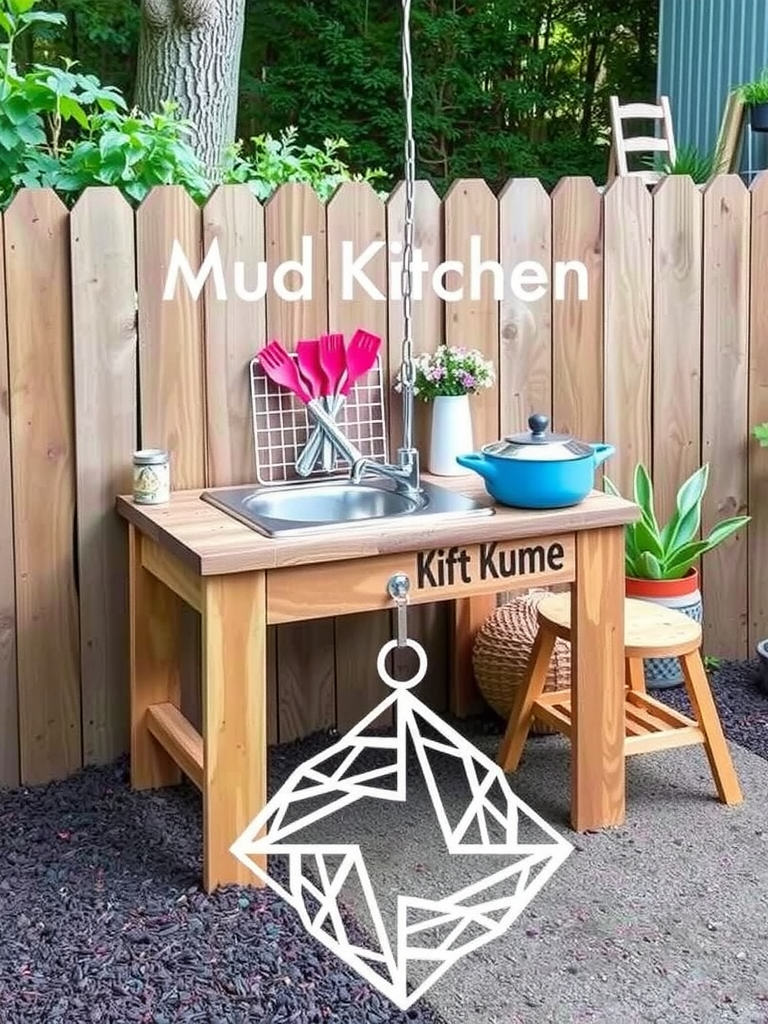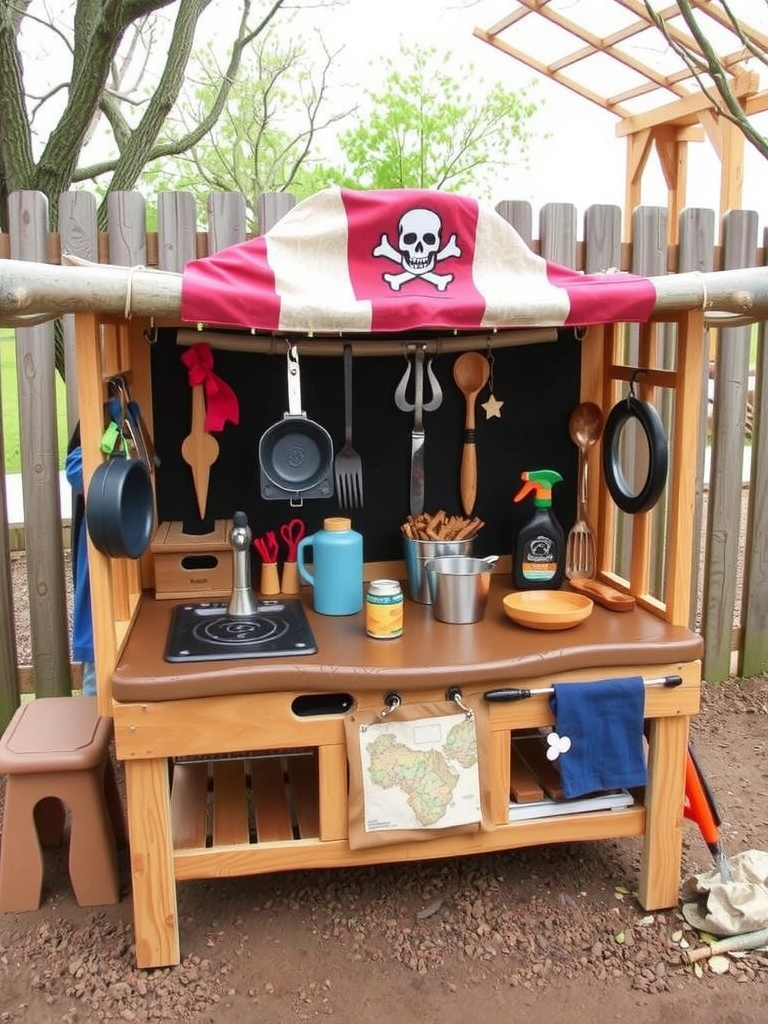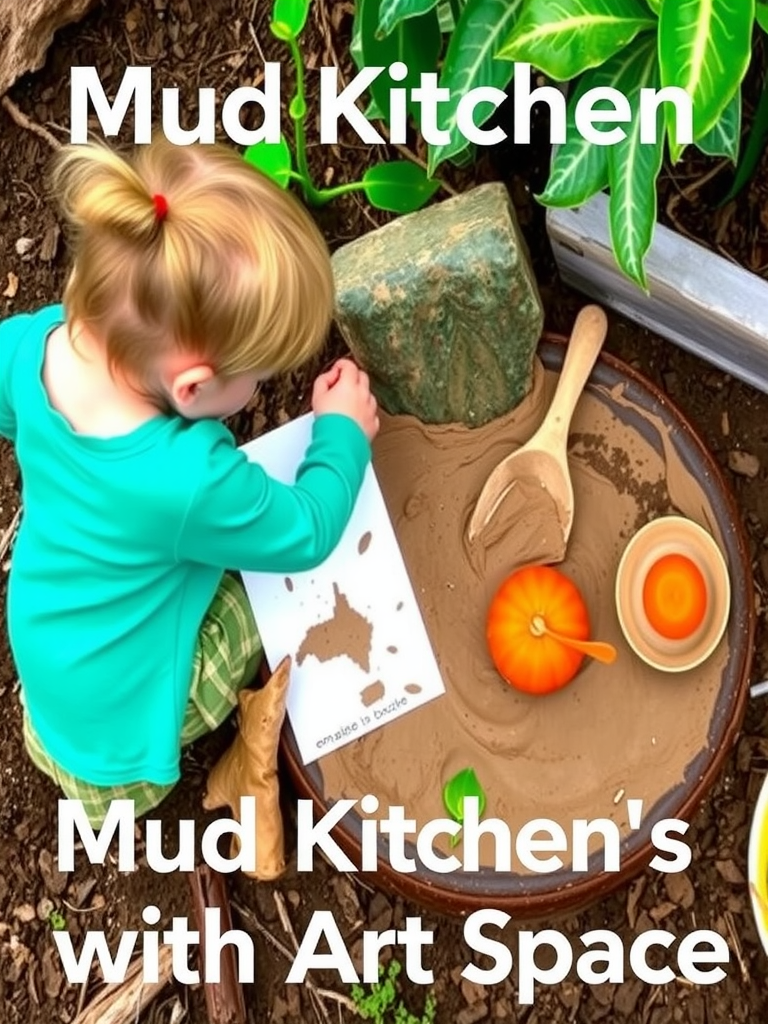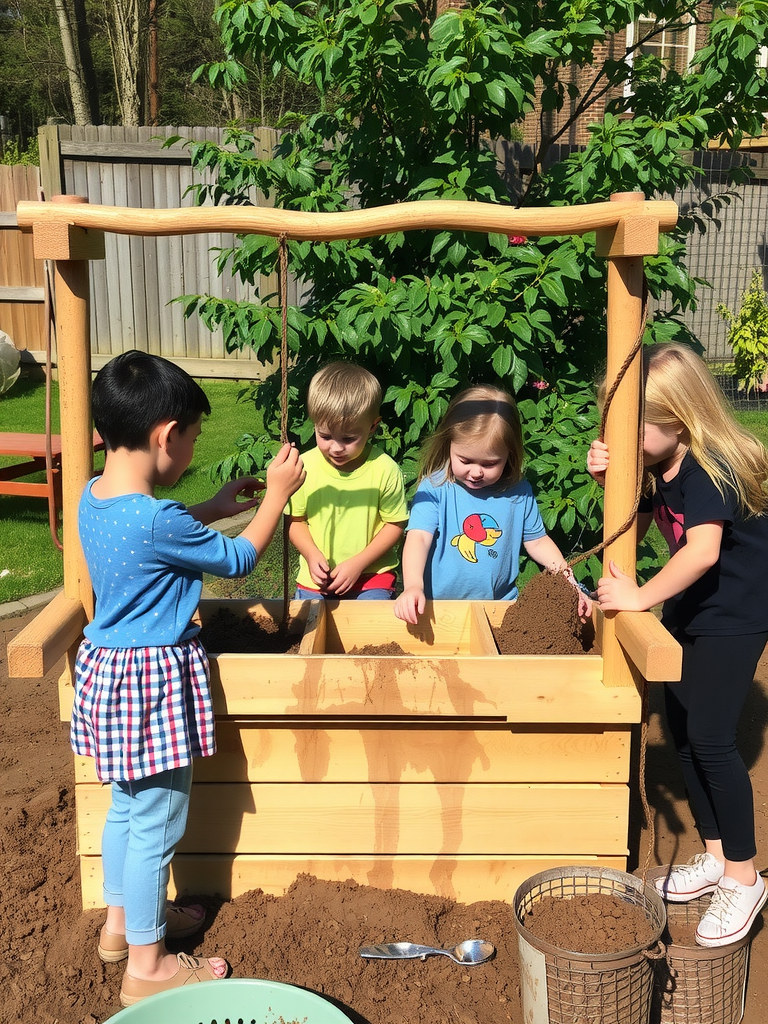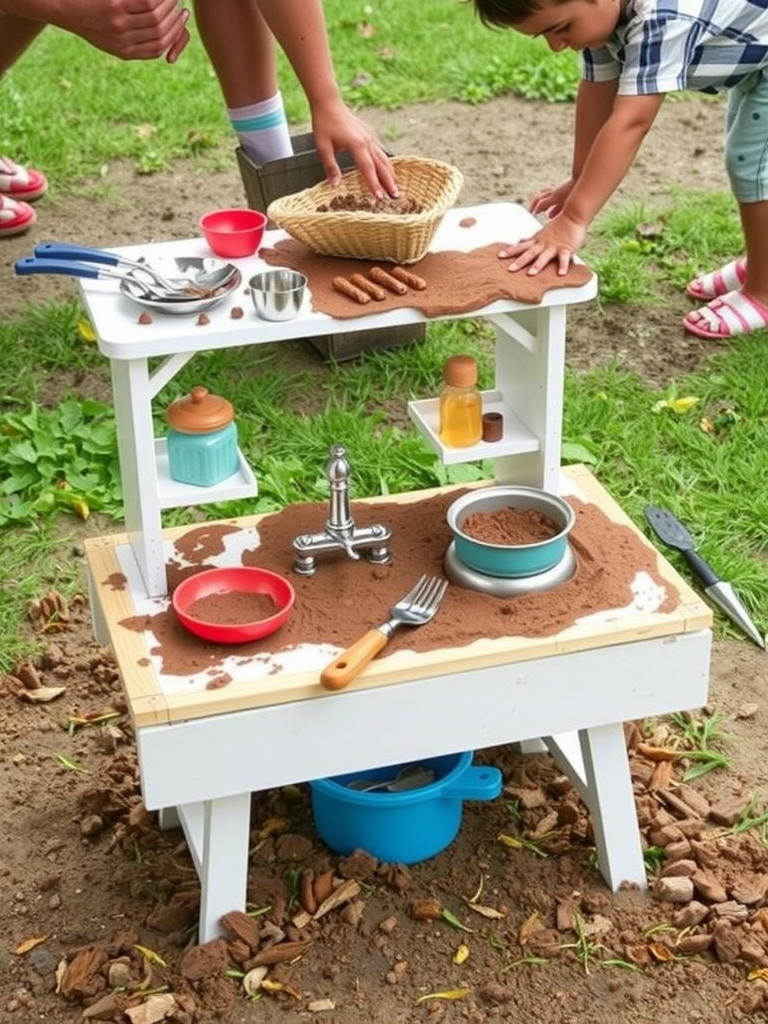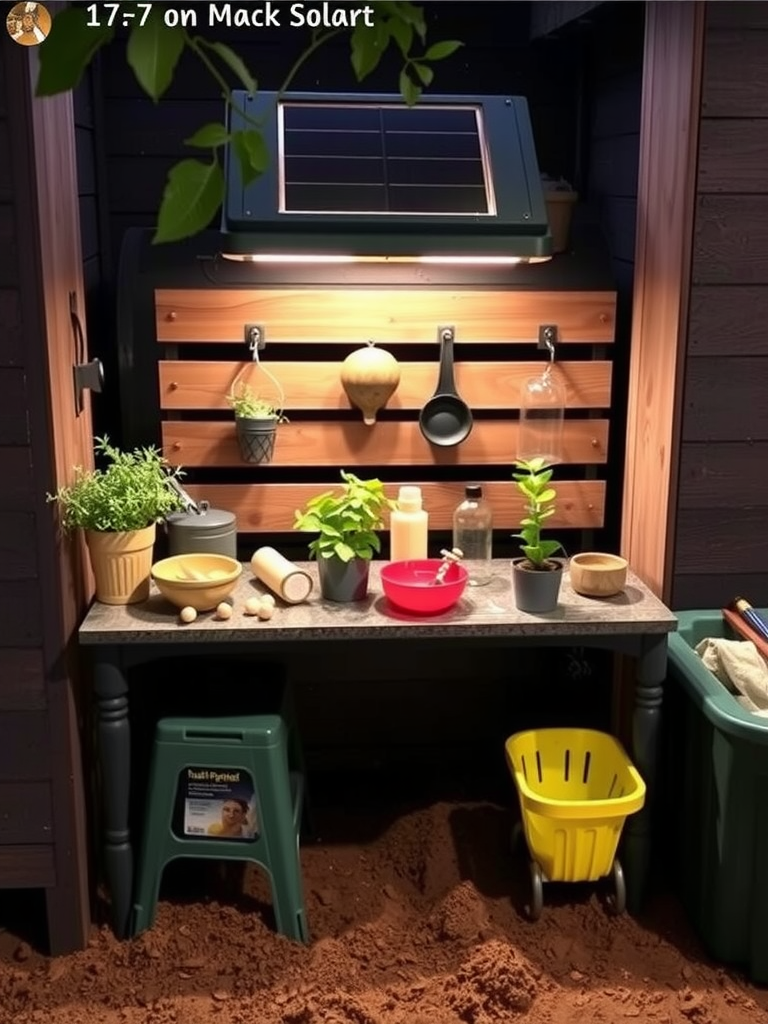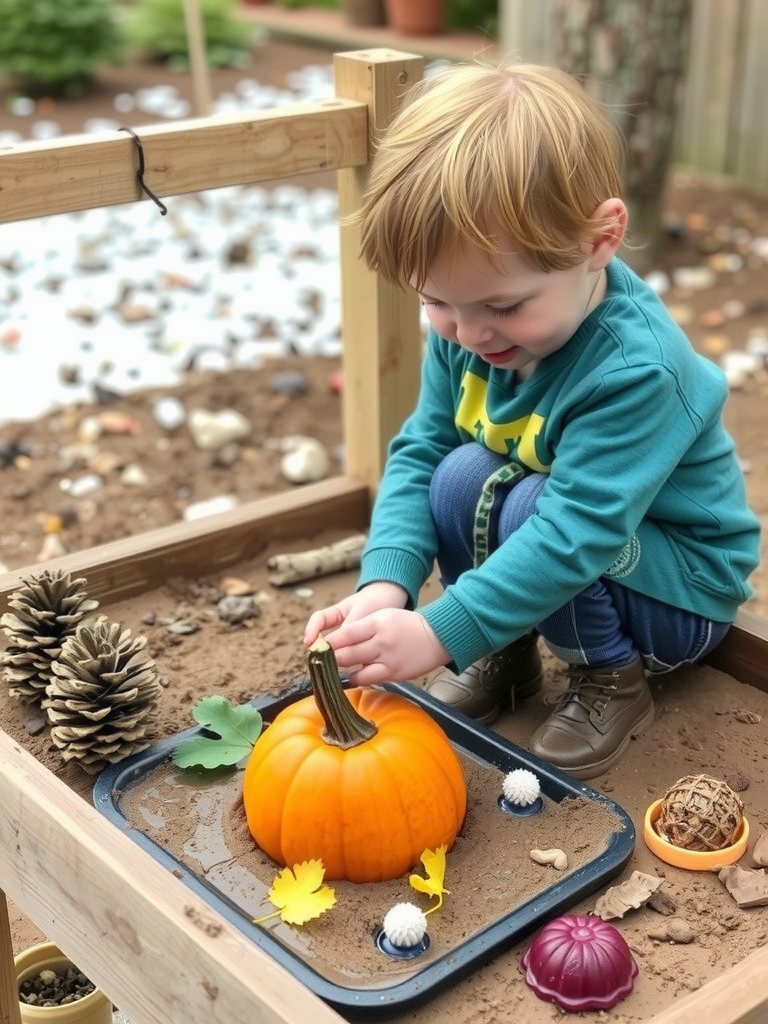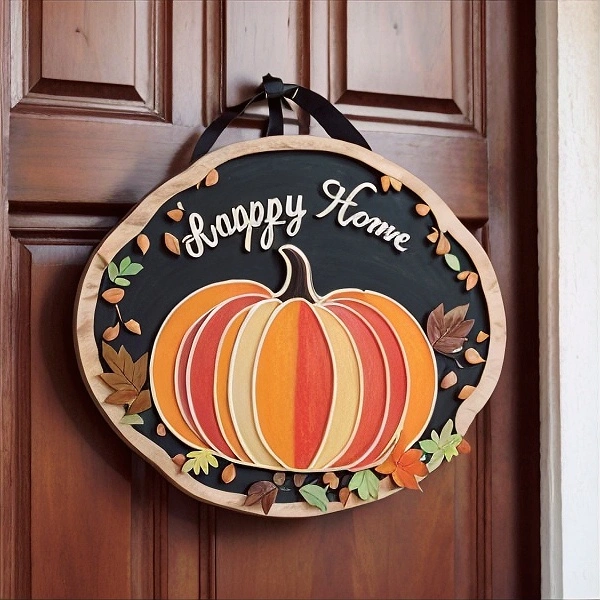Outdoor play is essential for children’s development, encouraging creativity, exploration, and sensory experiences. A mud kitchen is an exciting addition to your backyard that allows kids to engage in imaginative play while getting a little messy. These rustic play areas provide a perfect setting for children to experiment with mud, pots, tools, and various natural materials, enhancing their cognitive and physical skills.
This article explores 18 creative mud kitchen ideas that can inspire you to create a fun and interactive play space for your little ones. From simple DIY setups to more elaborate designs, you’ll find a range of options to suit every backyard and inspire hours of outdoor fun.
1. Rustic Wooden Mud Kitchen
Building a rustic wooden mud kitchen can be an exciting DIY project that adds charm to your backyard. Use untreated wood to create a sturdy structure featuring a workbench, sink, and storage space for tools. This natural aesthetic blends beautifully with outdoor surroundings and provides children with a safe environment to unleash their creativity.
Incorporate various sized containers and utensils for mixing and serving mud dishes, and allow children to customize their space with decorations such as painted rocks or hand-drawn signs.
2. Repurposed Pallet Mud Kitchen
If you’re looking for a budget-friendly option, consider crafting a mud kitchen from repurposed wooden pallets. These versatile materials can be arranged to create an engaging play kitchen that encourages hands-on learning and exploration. Position two pallets upright to form a base and add a countertop for preparation.
Enhance functionality with old pots, pans, and kitchenware, and situate the setup in a shady area to keep kids cool while they enjoy their muddy adventures.
3. Multi-Level Mud Kitchen
A multi-level mud kitchen can elevate the play experience by providing various surfaces and heights for children to explore. Utilize wooden crates or platforms at different levels to create a tiered setup that promotes cooperative play and shareable experiences.
This design encourages kids to engage with one another as they work together on their culinary creations, fostering social skills and teamwork while having fun in nature.
4. Mud Kitchen with Natural Elements
Incorporating natural elements into your mud kitchen can enhance the sensory experience. Surround the kitchen area with plants, stones, and logs that children can use in their play. A natural setting not only beautifies the space but also encourages kids to explore their surroundings.
Children can use leaves, twigs, and stones as ingredients in their mud concoctions, inspiring imaginative play that connects them with nature.
5. Compact Mud Kitchen
If your outdoor space is limited, don’t worry! A compact mud kitchen design can fit perfectly into smaller backyards or patios. Utilize a small table or bench to create a functional setup with a sink, stovetop, and storage for utensils.
This compact option still provides endless opportunities for messy play without overwhelming the available space, ensuring that your kids can enjoy the benefits of outdoor creativity.
6. Vertical Mud Kitchen
For an innovative twist, a vertical mud kitchen can maximize space while creating an engaging play area. Install shelves or pegboards to hang tools, containers, and other materials at different heights. This configuration not only saves space but also encourages kids to reach and discover items in an interactive manner.
The vertical layout also allows children to work together while preparing their mud meals, promoting teamwork and problem-solving skills.
7. Mud Kitchen with Water Features
A mud kitchen equipped with water features can elevate outdoor play to new heights. Incorporate a small water pump or a bucket system to create a flowing water source that children can use to mix mud and create different textures.
This addition not only provides endless sensory exploration but also allows kids to learn about simple mechanics and water flow while having fun and getting dirty.
8. Themed Mud Kitchen
Creating a themed mud kitchen can enhance the overall play experience, whether it revolves around a favorite book, movie, or type of cuisine. For example, a pirate-themed mud kitchen can include treasure boxes, maps, and themed utensils for imaginative adventures.
This thematic approach adds a layer of narrative to outdoor play, prompting children to engage in storytelling while exploring different roles and scenarios.
9. Mud Kitchen with Sensory Bins
Integrate sensory bins into your mud kitchen setup to provide even more exploration opportunities. Fill bins with materials like sand, water beads, or dried leaves, and add scoops and containers that children can use to mix with mud.
This combination creates a rich sensory environment, stimulating multiple senses and encouraging creative exploration as kids experiment with textures and substances.
10. Movable Mud Kitchen
A movable mud kitchen can provide flexibility for outdoor play. Construct a mud kitchen on wheels, allowing it to be easily relocated to different areas of the yard or even brought indoors on rainy days.
This versatile design ensures that children can enjoy their mud kitchen experience in various settings, enhancing their engagement and fostering imaginative play regardless of the weather conditions.
11. Mud Kitchen with Art Space
Combining a mud kitchen with an art space can stimulate creativity in multiple forms. Set up an area for painting, drawing, or crafting alongside the mud kitchen, encouraging children to use natural materials to create artworks.
This integration promotes holistic play, allowing kids to express themselves through both tactile and visual mediums while learning about environmental art.
12. Mud Kitchen with Culinary Skills
Incorporating culinary skills into the mud kitchen can create an educational experience disguised as play. Encourage children to measure, mix, and share their mud concoctions, introducing concepts such as proportions and flavors.
This hands-on approach to learning can spark an interest in cooking and healthy eating while allowing children to explore their creativity freely.
13. Community Mud Kitchen
A community mud kitchen can foster connection and collaboration among neighbors. Set up a shared space in a community garden or park, providing children with an opportunity to meet and play with new friends while engaging in muddy fun.
This communal approach encourages social interaction and builds a sense of community while providing continuous opportunities for imaginative exploration.
14. Mud Kitchen with Gardening Elements
Combining a mud kitchen with gardening elements can create a rich play environment that promotes both kitchen science and environmental awareness. Set aside a small area for planting herbs or vegetables that children can incorporate into their mud recipes.
This experiential learning approach teaches valuable lessons about sustainability, nutrition, and the importance of nature while engaging in imaginative outdoor play.
15. Miniature Mud Kitchen
A miniature mud kitchen can be a delightful addition to smaller spaces or play areas. Create a compact setup with a low table and smaller utensils that are perfect for younger children to enjoy. This design ensures that smaller play spaces can still provide engaging hands-on experiences.
This miniature option promotes imaginative play tailored to younger kids, giving them an opportunity to engage actively in their outdoor surroundings.
16. Mud Kitchen with Cooking Gear
Enhancing your mud kitchen with real cooking gear can add an exciting realism to play. Encourage kids to use old pots, pans, and utensils for their mud culinary creations. This approach not only enriches their learning experience but also introduces them to responsible use of household items.
Allowing children to use real gear inspires them to take ownership of their play, fostering creativity and imaginative thinking while they enjoy their muddy adventures.
17. Solar-Powered Mud Kitchen
For a tech-savvy twist, consider designing a solar-powered mud kitchen. Integrate solar lights or a small solar water pump that can circulate water and enhance the play area even after the sun sets. This innovative twist combines sustainability with fun, demonstrating the practical uses of solar energy.
This setup not only opens the door to learning about renewable energy but also extends playtime, encouraging creativity regardless of daylight availability.
18. Seasonal Mud Kitchen
Design your mud kitchen to adapt to seasons, incorporating seasonal materials and themes. In fall, use pumpkins, pine cones, and colorful leaves; in winter, incorporate snow or ice for unique sensory experiences.
This seasonal adaptability keeps the play fresh and engaging throughout the year, encouraging children to explore different sensory elements as the environment changes.
Conclusion
Creating a mud kitchen is a wonderful way to inspire outdoor play, learning, and creativity in children. With these 18 creative mud kitchen ideas, you can design a unique outdoor space that captivates young imaginations and provides endless hours of fun.
By fostering exploration with a variety of materials and themes, you encourage children to engage with their environment meaningfully while developing essential life skills.
Frequently Asked Questions
What age is appropriate for a mud kitchen?
A mud kitchen is suitable for preschool-aged children and up, allowing younger kids to explore sensory play while providing opportunities for older kids to engage in imaginative and role-playing activities.
How can I keep the mud kitchen safe for children?
Ensure that the kitchen materials are non-toxic and safe for play. Avoid sharp objects, and supervise younger children to prevent any potential hazards.
How do I clean a mud kitchen after use?
Simply rinse off dirt and mud with water, and allow any wooden elements to dry thoroughly. Seasonal maintenance may involve sealing wooden surfaces to prevent rot.
Can I make a mud kitchen indoors?
While mud kitchens are primarily designed for outdoor use, you can create a smaller sensory play area indoors using sand, water, and other materials to mimic the experience.
What materials are best for a mud kitchen?
Using natural, non-toxic materials like untreated wood, metal containers, and tools encourages creative play while ensuring safety and environmental consciousness.


